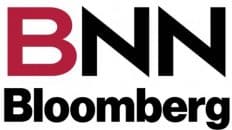It seems to me like we’re stuck in a pricing rut that’s going to be tough to climb out of. This hole is getting deeper while the prices of gasoline and diesel are getting more out of reach. There is little in the way of positive signs to indicate relief at the gas pump or diesel loading rack anytime soon.
In fact, if traders are looking for any guidance on the direction of prices in the near or medium term, they will be sadly disappointed because this week’s EIA report is… ummm… a “carbon” copy of last week’s information.
In short, supply is slipping further and further behind demand. This is especially true for crude and middle distillates. The former is the essential ingredient and pricing determinant of all refined products. Diesel, a member of the middle distillate family of products, is the true indicator of economic health. Demand for diesel normally peaks in the winter and late fall. Here we are in mid-winter and demand for diesel is up 15% while supply is down by the same amount.
The teeter is out of totter.
If there is a glimmer of hope, it’s that the rate of demand growth is slowing, which may or may not be the intimidation factor of record high gasoline prices. That’s the good news but this may be countered with the falling refinery run data. This is not surprising as we are entering the semi-annual maintenance season.
Even though lower refinery runs would normally mean an increase in gasoline and crude oil inventories, this will not be the case this time around because of unbridled demand for gasoline.
There are two ways that prices can come down:
Drastically cut back on demand; but this appears to be a tough sell as consumers seem to be numb to the record high pump prices we are seeing today.
The other factor would be an increase in crude oil inventories to rebalance the supply side of the equation and calm down the Wall “Street” traders. Although OPEC+ has indicated it will keep the promise it made last August to increase production by 400,000 bpd each month, “the street” doesn’t believe in the promises made by this group.
This means that the U.S. will have to come to the rescue and kick start its shale oil industry, which can turn production on and off with the flick of a switch. You can be sure the switch is ready to be turned on with crude heading toward $90/bbl and shale oil at a breakeven point of $50/bbl or less.
However, increased U.S. oil production may be counter to the policy of the current anti fossil fuel Biden Administration.
Maybe it’s better to eat humble pie than have it thrown in your face.
– Roger McKnight – B.Sc., Senior Petroleum Analyst








Add comment